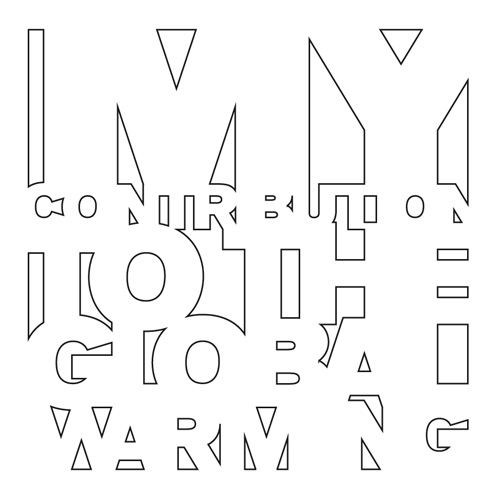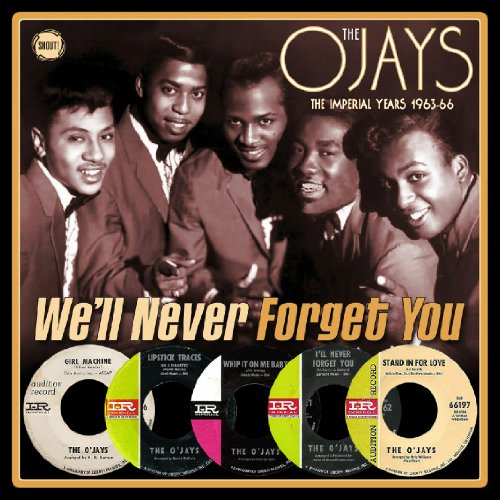Reissue CDs Weekly: Cumbia Cumbia 1 & 2, Etienne de Crecy, The O'Jays | reviews, news & interviews
Reissue CDs Weekly: Cumbia Cumbia 1 & 2, Etienne de Crecy, The O'Jays
Reissue CDs Weekly: Cumbia Cumbia 1 & 2, Etienne de Crecy, The O'Jays
Irresistible tropical classics from Colombia, an overdose of Gallic elastic loop-funk and assured Sixties soul

Various:  Cumbia Cumbia 1 & 2
Cumbia Cumbia 1 & 2
Peter Culshaw
These totally irresisitible compilations were originally issued as separate albums in 1989 and 1993, and were for many (including me) a first taste of this loping, vivacious sound, which originated originally in the 17th century on the Caribbean Coast of Colombia and has been a badge of identity for Colombians ever since.
The music is a mix of African and indigenous rhythmic elements overlaid by brass, accordion, clarinet and electric guitar, pushed along with an addictively rocksteady bassline.
Although Cumbia has since spread to Mexico, with more psychedelic versions in Peru and mixed with ska in Argentina, and is continually evolving into variants like electro-cumbia, Colombia remains the heart of the music.
The first disc has infectious gems from the likes of Rudolfo y su Tipica, Sonora Dinamita and Gabriel Romera and stretches from 1960 to 1988, while the second disc is more focussed on the so-called "golden age" of Cumbia in the Fifties and Sixties and has an even more retro feel with classics like "Lupita" by Guillermo Gonzalez that sound like the soundtrack to some imaginary tropical silent movie, complete with slapstick, romance and melodrama.
In the Fifties there were more big bands, while the Sixties tended to have smaller combos, but in whatever form these tunes emerge, they have a deeply nostalgic feel of a lost world as well as being compulsively danceable music.
This collection is actually a kind of tribute to Antonio Lopez Fuentes,on whose label all these songs were originally released. Discos Fuentes is spoken of with some awe in world music circles, something like a Colombian Motown (I headed straight to their offices in Medellin when I went to Colombia in 1992, and it still exists). Fuentes, who died in 1985, handpicked musicians from bars and clubs along the coast, then personally arranged and produced these wonderful musicians. The balance between celebration with a dash of melancholy for lost loves and lost times makes these tunes classics. You won’t find a more charming collection of tropical gems anywhere.
 Etienne de Crecy: My Contribution to the Global Warming
Etienne de Crecy: My Contribution to the Global Warming
Thomas H Green
Etienne de Crecy appeared from the same early Nineties Parisian milieu as Air and first made an impact on wider club culture via his Motorbass project with Philippe Zdar (of Cassius) and his own Super Discount album. Indeed, he was a key player in originally putting the French house sound on the map. This amusingly titled career retrospective comes in the form of five CDs entitled, respectively, Essentials, Remixes 1995-2005, Remixes 2005-2012, Unreleased Tracks 1992-2005 and Unreleased Tracks 2006-2011. It's more Etienne de Crecy than anyone could possibly need, especially, as he often specialises in percussive, elastic loop-funk that's more for DJs than home listening. Having said that, amongst it all there are plenty of juicy nuggets that are well worth owning, such as the sleek acid house remix of Kraftwerk's "Aerodynamik", the spaced out groove of "Trance" and the Daft Punk-ish techno drive of "Funk".
 The O’Jays: We'll Never Forget You - The Imperial Years 1963-66
The O’Jays: We'll Never Forget You - The Imperial Years 1963-66
Kieron Tyler
Although Ohio’s O’Jays will always be defined by early Seventies hits “Back Stabbers” and “Love Train”, they were making records over ten years earlier. Their 1965 single “Lipstick Traces (on a Cigarette)” was a US Top 30 R&B hit, and had an impact on UK mods. This comp includes that perennial dance floor filler, other Northern favourites and fills the picture with all the other tracks they recorded as Imperial singles from 1963 to 1966 – the first time this material has been brought together. They began as a high-school doo wop group, initially as The Mascots. An encounter with Cleveland DJ Eddie O’Jay brought the name change. He became their manager. A few singles (as The Mascots and The O’Jays) preceded their Imperial signing. The tracks collected here reveal their evolution from a doo woppers - early cuts, although with a backing band, still sound like a Fifties vocal group - into an assured soul outfit with leanings towards The Drifters. Highlights are many: 1963's strident “Stand Tall” (written by band member Eddie Levert); 1964’s southern-sounding “You’re on Top” and the stomping “Girl Machine"; 1965’s reflective, atmospheric “Think it Over Baby”. This is a remarkably consistent listen. The O’Jays’s early years deserve instant reappraisal.
Watch some Colombian Cumbia, below:
The future of Arts Journalism
You can stop theartsdesk.com closing!
We urgently need financing to survive. Our fundraising drive has thus far raised £49,000 but we need to reach £100,000 or we will be forced to close. Please contribute here: https://gofund.me/c3f6033d
And if you can forward this information to anyone who might assist, we’d be grateful.

Subscribe to theartsdesk.com
Thank you for continuing to read our work on theartsdesk.com. For unlimited access to every article in its entirety, including our archive of more than 15,000 pieces, we're asking for £5 per month or £40 per year. We feel it's a very good deal, and hope you do too.
To take a subscription now simply click here.
And if you're looking for that extra gift for a friend or family member, why not treat them to a theartsdesk.com gift subscription?
more New music
 'Everybody Scream': Florence + The Machine's brooding sixth album
Hauntingly beautiful, this is a sombre slow burn, shifting steadily through gradients
'Everybody Scream': Florence + The Machine's brooding sixth album
Hauntingly beautiful, this is a sombre slow burn, shifting steadily through gradients
 Cat Burns finds 'How to Be Human' but maybe not her own sound
A charming and distinctive voice stifled by generic production
Cat Burns finds 'How to Be Human' but maybe not her own sound
A charming and distinctive voice stifled by generic production
 Todd Rundgren, London Palladium review - bold, soul-inclined makeover charms and enthrals
The wizard confirms why he is a true star
Todd Rundgren, London Palladium review - bold, soul-inclined makeover charms and enthrals
The wizard confirms why he is a true star
 It’s back to the beginning for the latest Dylan Bootleg
Eight CDs encompass Dylan’s earliest recordings up to his first major-league concert
It’s back to the beginning for the latest Dylan Bootleg
Eight CDs encompass Dylan’s earliest recordings up to his first major-league concert
 Ireland's Hilary Woods casts a hypnotic spell with 'Night CRIÚ'
The former bassist of the grunge-leaning trio JJ72 embraces the spectral
Ireland's Hilary Woods casts a hypnotic spell with 'Night CRIÚ'
The former bassist of the grunge-leaning trio JJ72 embraces the spectral
 Lily Allen's 'West End Girl' offers a bloody, broken view into the wreckage of her marriage
Singer's return after seven years away from music is autofiction in the brutally raw
Lily Allen's 'West End Girl' offers a bloody, broken view into the wreckage of her marriage
Singer's return after seven years away from music is autofiction in the brutally raw
 Music Reissues Weekly: Joe Meek - A Curious Mind
How the maverick Sixties producer’s preoccupations influenced his creations
Music Reissues Weekly: Joe Meek - A Curious Mind
How the maverick Sixties producer’s preoccupations influenced his creations
 Pop Will Eat Itself, O2 Institute, Birmingham review - Poppies are back on patrol
PWEI hit home turf and blow the place up
Pop Will Eat Itself, O2 Institute, Birmingham review - Poppies are back on patrol
PWEI hit home turf and blow the place up
 'Fevereaten' sees gothic punk-metallers Witch Fever revel in atmospheric paganist raging
Second album from heavy-riffing quartet expands sonically on their debut
'Fevereaten' sees gothic punk-metallers Witch Fever revel in atmospheric paganist raging
Second album from heavy-riffing quartet expands sonically on their debut
 theartsdesk Q&A: Soft Cell
Upon the untimely passing of Dave Ball we revisit our September 2018 Soft Cell interview
theartsdesk Q&A: Soft Cell
Upon the untimely passing of Dave Ball we revisit our September 2018 Soft Cell interview
 Demi Lovato's ninth album, 'It's Not That Deep', goes for a frolic on the dancefloor
US pop icon's latest is full of unpretentious pop-club bangers
Demi Lovato's ninth album, 'It's Not That Deep', goes for a frolic on the dancefloor
US pop icon's latest is full of unpretentious pop-club bangers
 Yazmin Lacey confirms her place in a vital soul movement with 'Teal Dreams'
Intimacy and rich poetry on UK soul star's second LP
Yazmin Lacey confirms her place in a vital soul movement with 'Teal Dreams'
Intimacy and rich poetry on UK soul star's second LP

Add comment